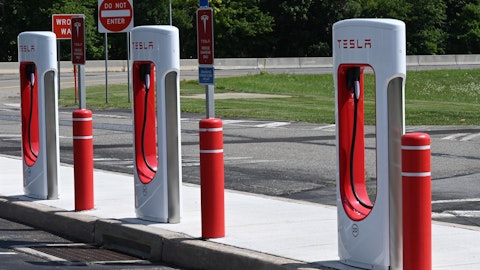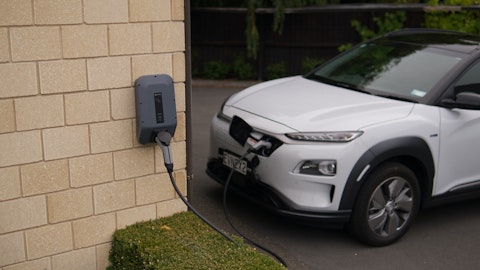As our production ramp continues, we expect inventory adjustments to diminish. In the quarter, GAAP gross margin was negative 17% and non-GAAP gross margin was 9%, which excludes the inventory adjustment. There were additional impacts from FX, geographic mix and higher input costs with a first in first out inventory treatment that collectively shaved another few points of the margin, which would have ended up in the mid teens if they’ve added back. The positive adjusted gross margin demonstrates the benefit of our unique medical capabilities within the company and points towards a faster path towards positive EBITDA. Our Q3 operating expenses totaled $87.4 million, which was down 38% year-over-year and down 1% over quarter as launched related R&D expenses continue to taper off.
While marketing, sales and service investments increased. Loss from operations was $99.6 million, a 29% year-over-year improvement and a 13% quarter-over-quarter increase. Net loss totaled $91 million or $0.27 loss per share, compared to $0.49 loss per share last year. Capital expenditures came in at $30.5 million for the quarter as launch related milestone payments diminished. We maintained a very disciplined approach to accessing capital markets, to bolster our business strategy. During the quarter, we raised an additional 150 million of gross proceeds from an existing investor to the same innovative financing structure as previously announced agreement in July. This served to furthermore bolster the balance sheet, while also increasing the amount of additional gross proceeds that can be offered to $550 million of 0% coupon senior unsecured convertible notes due in 2025.
We finished Q3 with $625 million in cash and restricted cash. This cash balance excludes approximately $50 million in VAT receivables that we expect to receive as refunds, or we monetize against upcoming sales taxes as we continue to sell cars in various European countries. Turning to our outlook. Neither our production nor demand are limiting our deliveries, but rather it’s the delivery and the service infrastructure. We have a great product and our customers want the product. We are in the process of dramatically overhauling our service and delivery infrastructure to keep up with the demand until the delivery process has reached our goal, which we expect later this year. We have now come to a stable production volume within an extremely fast and a very compressed timeframe, that has never been done before by an EV company.
As we work to scale our outbound logistics operations and we optimize our delivery and service network, we are updating our production guidance for 2023 to a range of 13,000 units to 17,000 units. This is a very prudent change that we need to do to enable a global delivery and logistics platform to scale. So we can serve our customers even better, and we are not sitting on inventory. This is also essential for our continued capital expenditure and parts and vehicle inventory discipline to better manage our working capital. This may be short-term pain, and it may not be something that Wall Street wants to hear, but it is extremely responsible for us. And it is essential for us that we do this for the long-term to provide a great service for our customers and set the organization for seamless growth.
As our delivery capability expands, our delivery efficiency should improve and with it working capital will become almost organic. Logistics from Europe to ultimately last mile delivery to a customer in the U.S is very complex, and several customers may not understand it as several customers when they see on their web or app that a vehicle is produced they are wondering why do they not get it within a few days. So let me explain a little bit of the complexity. As vehicle units get produced by Magna and they get handed over by magnet to Fisker, they arrive in a compound 20 kilometers away. They await a rail to get to the port of the Bruges in Belgium. They — at that point in time, they await getting on a vessel, and they make their way to five chosen ports here in the U.S. As they arrive at the ports, they get required software updates as we have consistently releasing software during the course of previous several weeks, and we will continue to release software.
These vehicles then make their way to vehicle processing centers all over the U.S for final pre-delivery inspection and preparation for delivery to our customers. This entire journey can take anything from 5 to 8 weeks more than what happens when a vehicle is going to a European customer. Our overall non-GAAP SG&A, R&D Plus CapEx guidance for 2023 remains in the range of $565 million to $640 million, with SG&A moving higher and CapEx decreasing. Collectively, this guidance balances our asset-light model, disciplined cost management and prudent investment plans. I want to again express my gratitude to the entire team for their dedicated efforts and steadfast commitment to the launch of an exceptional vehicle. We have made tremendous progress in an extremely short period of time, launched an amazing high volume product, deliveries have started in 10 countries.
Fisker team members are present in 15 countries, positioning us to introduce the Fisker brand and Fisker Ocean to more and more customers. We are now happy to take your questions. Operator, could you go to our first question, please.
Operator: Thank you. [Operator Instructions] I would like to now turn the call back over to Frank for a couple of pre-submitted questions. Please go ahead.


